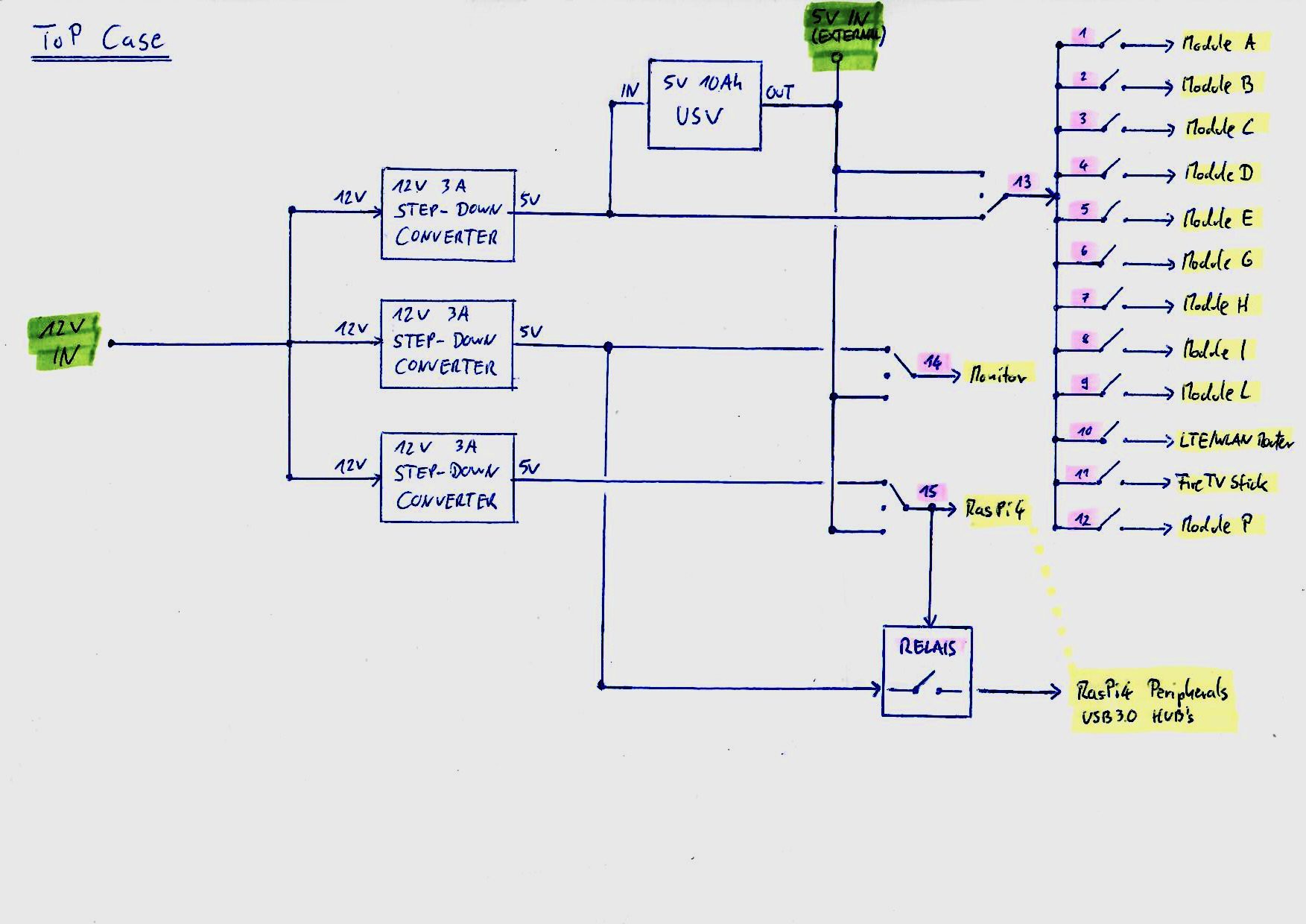Here is the electric Line Diagram of the Top Case, incl. 15 Switches to route the energy to the desired device(s).

- The 12V Input is connected with the 12V Output of the Bottom Case.
- Depending on the amount of activated devices (and power consumption) in the Top-Case, the build in USV can autonomously provide the necessary power for quite some time.
- Optionally an external 5V Power Source can be connected (e.g. a powerful Power-Bank)
- As a result, the Top-Case is de-facto completely de-coupled from the Bottom-Case and brings its own redundancy and internal Power Source (USV)
SOME KNOWN PROBLEM & INSIGHTS
- Sadly (even if the specification of the Step-Down Converters tell something different), the Step-Down Converters are sometimes not able to provide a stable Voltage and/or current. As such, specifically in Battery Mode (12V Provided by the Bottom-Case), the RasPi sometimes reboots. Wen the Cyberdeck is connected with 230V or a strong PowerBank, this does not happen. As such I am still experimenting with suitable Step-Down converters.
- Instead of a 60W 5V and a 10A 12V Power Supply in the Bottom-Case, I should have used just a powerful 12V Power Supply to save some space for additional gadgets!
- The additional Power Supply for the RasPi Peripherals (all the USB 3.0 HUBs + connected USB devices) currently is for sure somehow unconventional... As soon as the RasPi is powered by the Switch #15 it will close the Relais and the Peripherals are power supported by a 2nd Step-Down Converter. Without, no chance to power up the RasPi in the Cyberdeck at all (with the current Step-Down Converters).
- Sadly the USV is good for all internal devices (1 ... 12) and the Monitor or the RasPI, but not fall all. It does not provide enough current and voltage stability. How ever, the very flexible "routing" of the energy with the Switch Panel allows plenty of options to by-pass or compensate this. And remember: It is not intended to have the RasPi powered up all the time. In a lot of use cases you don't need it (e.g. when you make use of some of the ESP32 Modules, or the LTE/WLAN Module in combination with the FireTV Stick or the Echo Flex).
 Lord Of All Things
Lord Of All Things
Discussions
Become a Hackaday.io Member
Create an account to leave a comment. Already have an account? Log In.